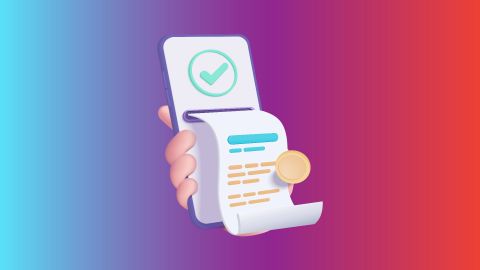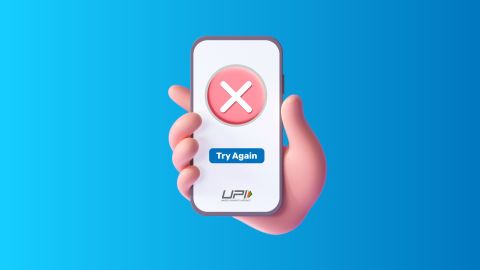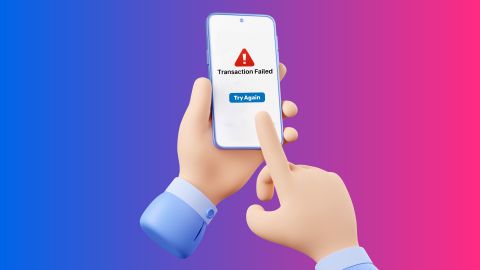Delve into the key benefits and challenges of wind power. This guide covers environmental advantages, financial considerations, and the technological future of wind energy.
Introduction to wind power
-
Wind power is a renewable energy source that converts wind energy into electricity. It utilises wind turbines, which have blades that rotate when wind flows over them. This rotation drives a generator, producing electrical energy.
Wind is created by the uneven heating of the Earth's surface by the sun. As the sun heats different areas, air moves from high-pressure to low-pressure zones, creating wind. The kinetic energy from this moving air is harnessed by wind turbines.
Wind power offers a renewable, clean energy source with the potential to transform our future, though it comes with its challenges. Just like wind energy, managing your electricity bill should be efficient and seamless. With Bajaj Finserv’s BBPS platform, Bajaj Pay, you can easily take control of your payments, ensuring a smooth connection to the energy you rely on.
Wind turbines can be found on land or offshore. They vary in size and design, with horizontal-axis turbines being the most common. The efficiency of wind power depends on factors like wind speed, air density, and blade length. Higher wind speeds generate more electricity due to increased rotation of the turbine blades.
Overall, wind power is a clean and sustainable way to generate electricity, contributing significantly to global energy needs.Advantages of Wind Power
Wind power offers numerous advantages that make it a vital component of the renewable energy landscape. Wind power is not only environmentally friendly but also economically beneficial and essential for achieving energy independence. Its scalability further enhances its appeal as a sustainable energy solution.
- Environmental benefits
Wind energy is a clean source of power. It generates electricity without emitting greenhouse gases or air pollutants. This significantly reduces carbon footprints and helps combat climate change. In 2019, wind energy saved millions of tonnes of CO2 emissions in Europe alone2. Additionally, wind power does not require water for operation, conserving this precious resource.
- Renewable and sustainable energy source
Wind power is a renewable energy source. It relies on natural wind, which is abundant and inexhaustible. As long as the sun shines, the wind will continue to blow. This makes wind energy sustainable for the long term. It helps reduce dependence on fossil fuels, promoting a cleaner environment.
- Low operating costs
Once installed, wind turbines have low operating costs. They require minimal maintenance compared to other energy sources. The fuel—wind—is free and abundant. This leads to lower electricity prices for consumers over time. Many wind farms can operate efficiently for 20 years or more.Disadvantages of wind power
There are several disadvantages of wind power that are discussed below:
- Impact on wildlife
Wind power can negatively impact wildlife, particularly birds and bats. Turbines can pose collision risks for flying animals. Habitat disruption may also occur during construction and operation. Careful site selection and technology improvements are essential to mitigate these impacts.
- Intermittent energy production
Wind energy production is intermittent. It depends on wind availability, which can vary daily and seasonally. This unpredictability can create challenges for grid stability. Backup systems or energy storage solutions are often needed to ensure a reliable power supply.
- High initial investment
The initial investment for wind power can be substantial. Costs include turbine manufacturing, installation, and infrastructure development. While prices have decreased in recent years, financing remains a barrier for some projects. However, long-term savings often offset these initial expenses over time.Comparison of wind power with other energy sources
Wind power is a renewable energy source that stands out when compared to other energy types like fossil fuels and solar energy. It is environmentally friendly, producing no greenhouse gas emissions during operation, unlike fossil fuels, which contribute significantly to climate change and air pollution. Wind turbines can convert up to 60-90% of the wind's kinetic energy into electricity, making them more efficient than solar panels, which typically convert about 20% of sunlight into usable energy.
However, wind power is intermittent and depends on wind availability, while fossil fuels provide a consistent energy supply. Initial investments for wind projects can be high, but operational costs are low since wind is free. In contrast, fossil fuel extraction incurs ongoing costs. Wind power requires large land areas and is often best suited for rural locations, while solar panels can be installed in urban settings.
Ultimately, both wind and solar energy are crucial for reducing reliance on fossil fuels. The choice between them often depends on location and specific energy needs. As technology advances, both sources are becoming increasingly competitive in the energy market.Future of wind Power technology
The future of wind power technology is bright and innovative. Advances in turbine design are leading to larger, more efficient models that can generate more electricity. Floating offshore wind farms are gaining traction, allowing energy production in deeper waters with stronger winds.
Artificial intelligence is optimising turbine performance and maintenance, reducing downtime. Innovations in materials, such as carbon fibre blades, enhance durability, and efficiency. New technologies enable turbines to operate in low and high wind conditions, expanding suitable locations for energy generation.
Moreover, hybrid projects combining wind and solar energy are emerging, maximising output and minimising land use. Research indicates that significant increases in economically viable wind capacity are possible by 2025.
Overall, these advancements position wind power as a key player in the transition to a sustainable energy future, contributing significantly to global climate goals while ensuring reliable electricity supply.Conclusion
In conclusion, the future of wind power technology is promising and transformative. Innovations in turbine design, materials, and artificial intelligence are enhancing efficiency and reliability. Floating offshore wind farms expand energy generation opportunities in deeper waters. Hybrid projects that combine wind and solar energy maximise output and land use.
As countries strive for sustainable energy solutions, wind power will play a crucial role in reducing carbon emissions and achieving climate goals. Continued investment in research and development will drive further advancements. Ultimately, wind energy is set to become a cornerstone of the global clean energy landscape.State-wise Electricity payment
-
Recharge and Pay Bills
Mobile Prepaid
Mobile Postpaid
Broadband Bill Payment
Electricity Bill Payment
Bajaj Finserv App for All Your Financial Needs and Goals
Trusted by 50 million+ customers in India, Bajaj Finserv App is a one-stop solution for all your financial needs and goals.
You can use the Bajaj Finserv App to:
You can use the Bajaj Finserv App to:
- Apply for loans online, such as Instant Personal Loan, Home Loan, Business Loan, Gold Loan, and more.
- Explore and apply for co-branded credit cards online.
- Invest in fixed deposits and mutual funds on the app.
- Choose from multiple insurance for your health, motor and even pocket insurance, from various insurance providers.
- Pay and manage your bills and recharges using the BBPS platform. Use Bajaj Pay and Bajaj Wallet for quick and simple money transfers and transactions.
- Apply for Insta EMI Card and get a pre-approved limit on the app. Explore over 1 million products on the app that can be purchased from a partner store on Easy EMIs.
- Shop from over 100+ brand partners that offer a diverse range of products and services.
- Use specialised tools like EMI calculators, SIP Calculators
- Check your credit score, download loan statements and even get quick customer support—all on the app.
Frequently asked questions
What are the key environmental benefits of wind power?
Wind power significantly reduces greenhouse gas emissions, contributing to a cleaner atmosphere. It generates electricity without air pollutants, improving air quality and public health. Additionally, wind energy conserves water resources, as it requires minimal water for operation compared to fossil fuels.
How does wind energy impact wildlife?
Wind turbines can pose risks to wildlife, particularly birds, and bats, due to collision with turbine blades. However, advancements in technology and careful site selection can mitigate these impacts.
What are the long-term benefits of wind energy?
Long-term benefits include job creation, energy independence, and reduced reliance on fossil fuels. Wind energy also contributes to stable electricity prices over time.
How does wind energy affect local economies?
Wind energy projects stimulate local economies through job creation, tax revenues, and lease payments to landowners, supporting community development and infrastructure improvements.
What are the financial challenges of adopting wind power?
High initial investment costs for turbines and infrastructure can be a barrier. Additionally, fluctuating government policies and market conditions create financial uncertainty for investors.
Show More
Show Less




